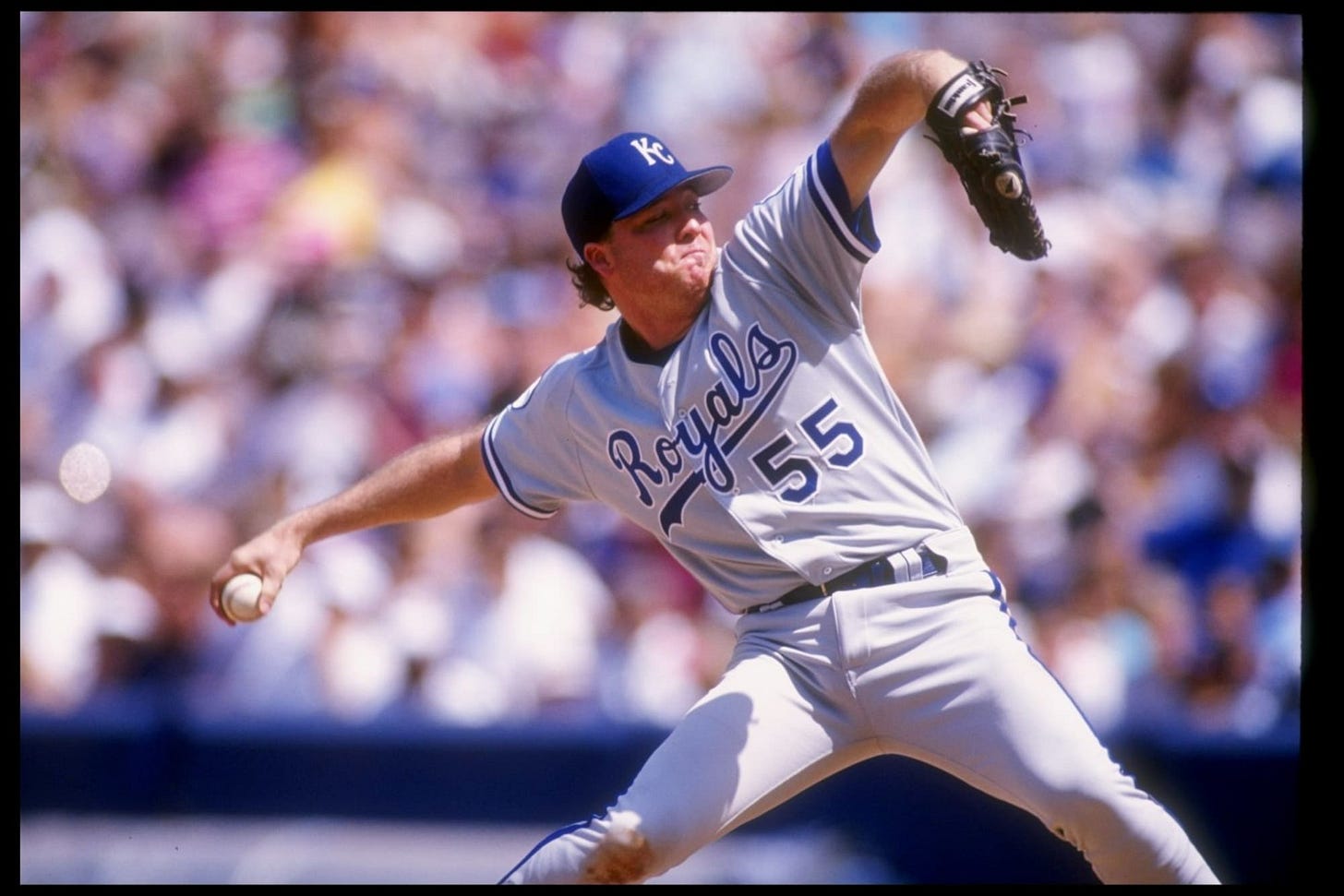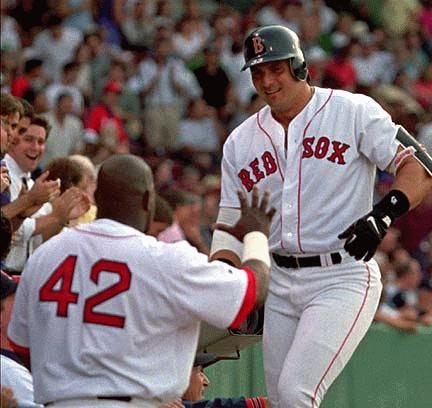Beyond the Monster is an ongoing series where we take you back in time and look at moments in Red Sox history.
One swing by Mark McGwire in the fourth inning against the Chicago Cubs and he became the single season home run record leader. On September 8th, 1998, at 8:18 p.m. Central Time, McGwire hit a home run over the fence in left field to pass Roger Maris and become baseball’s single season home run record holder.
McGwire celebrated on the field with his teammates, Maris’ family and the Cubs Sammy Sosa, who was also chasing Maris record that season. In a wild summer filled with home runs, Sosa and McGwire brought eyes onto the baseball world passing Maris.

McGwire ended up finishing that season with 70 home runs. It became a new single season baseball record. Sosa hit 66 home runs that season. McGwire and Sosa put on some great theater for baseball which so desperately needed this home run chase. As the years went on the two players would be involved in a debate over performance-enhancement drugs which would change the game forever.
Sosa was wearing a Cubs uniform in 1998, but four years prior, he had an agreement to join the Boston Red Sox. Knowing what we know now regarding the homer chase, it still would have been fun seeing Sosa hitting massive home runs over the Green Monster during his career.
Red Sox made significant signings in 1994, ultimately were voided
Back in 1994, while the players were on strike, owners of MLB teams implemented a system that allowed 38 players with four or five years of service to become restricted free agents. If any of the players who were restricted free agents, their current team would have 10 days to match the contract.
The Red Sox used this new system to their advantage and signed three players; Royals right handed starter Kevin Appier, closer John Wetteland of the Expos and Sosa.
Then Red Sox General Manager Dan Duquette had his sights on adding a top of the rotation starter, closer and a power bat. Duquette struck deals with Appier on a three-year deal worth $17 million and Wetteland signed a three-year, $15 million dollar deal with Boston.
When Sosa reached a tentative agreement with the Red Sox, the dreams of Appier, Wetteland and Sosa in a Red Sox uniform vanished. The National Labor Relations Board overturned the decision by baseball and every player who signed with clubs was voided. The league would then revert back to the free agency system we all know today.
Sosa would have been a huge addition to Boston had he signed in 1994. He was only 26-years-old at the time and the Red Sox would have found their young power bat to insert in a lineup with Mo Vaughn.
Due to the NLRB ruling, Sosa would re-sign a one-year deal with the Cubs and remain there for the remainder of his career, minus his last season in 2005 where he played with the Orioles.
The Red Sox ended up going into the 1995 season shedding player salaries and trading for Jose Canseco, who would end up slotting in the lineup behind Vaughn. That season Sosa had a breakout year for the Cubs, hitting 36 home runs and driving in 119 RBI. It would be the beginning of a power surge for Sosa that Red Sox fans would have loved to see at Fenway.
Beyond the Monster: Red Sox acquire slugger Jose Canseco from the Rangers
The 1995 Red Sox would go on to to win 86 games and finish in first place in the AL East. The Red Sox lineup was powered by Vaughn, Canseco and shortstop John Valentin. Tim Wakefield led the team with 16 wins in front of Erik Hanson. who won 15 games for the Red Sox.
The Red Sox played the Indians in the American League Divisional Series and were swept out of the playoffs.
The allure of Sosa in a Red Sox uniform will always be something I will think about when looking back on some of the "what ifs" in Red Sox history.
Follow Chris on Twitter @ChrisHenrique
For additional Red Sox and Major League Baseball content, follow Beyond the Monster: Boston Red Sox on Twitter @BeyondtheMnstr.








